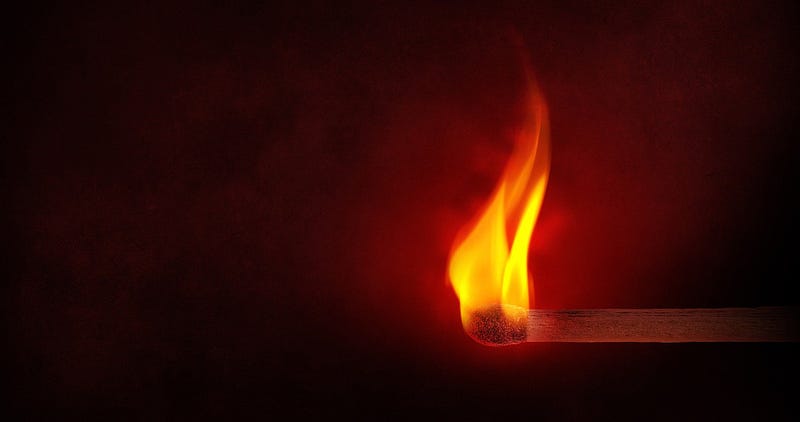The History of Fire
By Emilie Schwenzener, Biology and English 2025

The crackling and peeling bark of civilization welcomes the heat that comes with change. The history of fire, a story of ever changing definitions for what fire is, is the shape of expression. Fire becomes a symbol of the self, a belief in the divine, or a sacrifice from pain. It’s a mode of storytelling through the elemental senses. In “Fire and Civilization” by Laina Farhat, fire is called “the major factor in the agrarian revolution, which all historians recognize as the beginning of civilization.” The distinction of modern human beings from their predecessors as fire began to take center in all society — where warmth, protection, and wealth can stem from this elemental power — creates the image of human beings as powerful. However, the image of fire as a discovery that can always be easily controlled is not always the case.
Fire was transformed into an icon of the divine, a reserved image for the deities and mystical. In ancient Egypt, the god Ra was a symbol of the sun and represented the exposure of the sun as all-knowing and giving. The worship of a deity in the image of a world of flames sparks a sense of humility in its followers. Here, fire is worship as it is symbolic for power. Similarly, ancient Egyptian society was built on the concept of hierarchy with a powerful center, a leader that is the image of the Divine. The significance in symbolism of power in fire reflects on Ra imagined as a ball of gas, burning viciously in the center of the sky, both unreachable but unmercifully felt. Just as heat is worshiped, heat can be taken in as emotion.
The transformation of fire into an expression of the personal is a valuable perspective in the case of Mohamad Bouazizi, the man who set himself on fire in 2010, marking the very first actions that led to the Arab Spring. The New York Times interviewed Adel Dridi, who similarly burned himself. He stated, “I wanted to burn myself because I was burning inside.” His actions followed frustrations with the police, who tipped his fruits on display at a market on the street. Bouazizi and Dridi found an expression of pain as well as a call for justice and relief in the expression of fire. Here, fire harms not only the skin, but it exposes the truth of individuals in the dark.
Fire, unexpectedly, becomes a catalyst for connections, whether with someone next door or across the globe.
In all the changes of what fire can mean to us, the undeniable feeling of hopelessness is universal when fire overpowers our control. From recent forest fires to Notre Dame burning, how we see ourselves when facing fire can often be defenseless when fire is disaster. To be engulfed in flames, contaminated “with clouds of toxic dust,” the New York Times explains the events of the Notre Dame burning in 2019 as a biohazard to nearby residents, reporting the aftermath of a fire. Experts believed that mandatory testing on children in the exposed area should be done due to the exposure of toxic fumes, resulting in anxious responses from the public concerning health risks. With our dependence on fire for survival, events that result in loss because of it can remind us of the person we sit with to share the fire that once kept us warm. These moments where we cannot seek security in fire bring people closer to share the experience and ease the intense emotions that come with this loss. Fire, unexpectedly, becomes a catalyst for connections, whether with someone next door or across the globe.
The history of fire is phenomenal; its nature is used as a mirror for what we call expression, where its intensity and clarity can give a glimpse of human truth. Stephen J. Pyne describes fire as a source of power, stating, “No wonder people went to extraordinary lengths to maintain eternal flames. Without fire they were nothing.” The science of heat becomes an abstract survival necessity, and eternity lies in the edges of fire. And that’s why we huddle in front of it.
